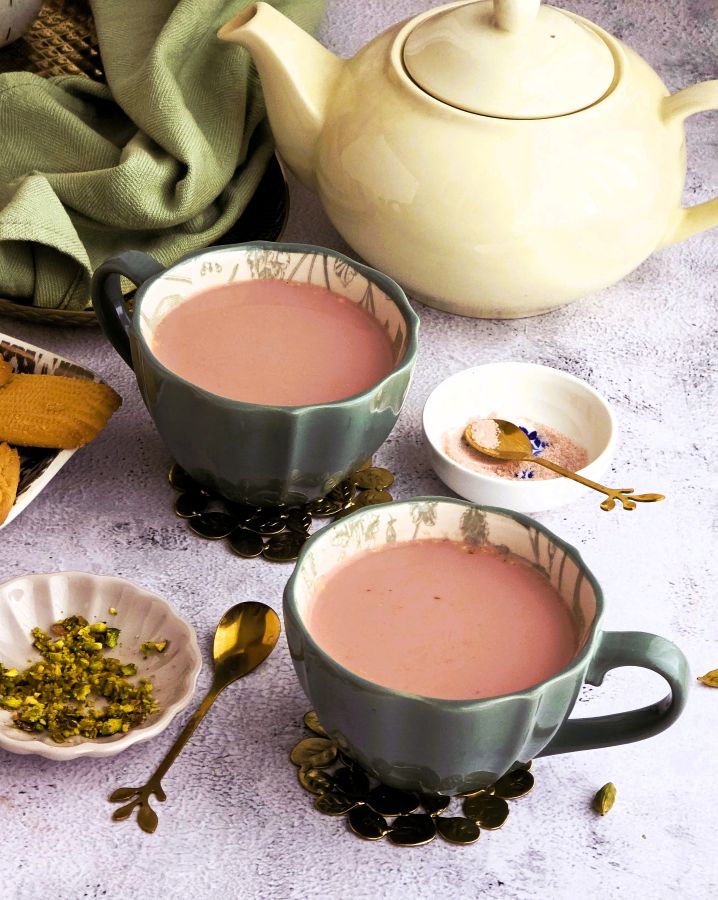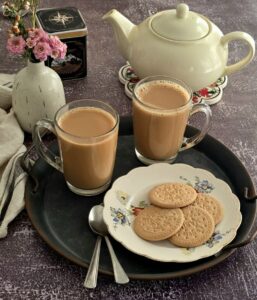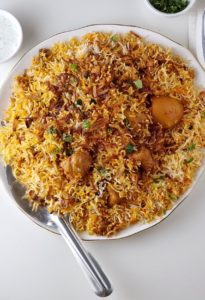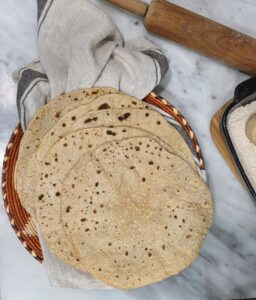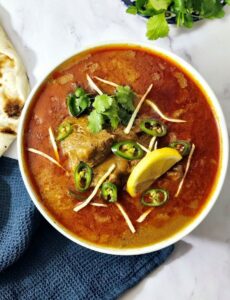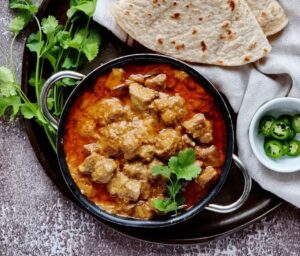There’s something magical about a warm cup of Kashmiri Chai (Pink Tea) — creamy, aromatic, and beautifully pink in color. This traditional tea from the Kashmir region is more than just a drink; it’s a comforting ritual, especially enjoyed during chilly winter evenings, festive gatherings, and special occasions like Eid.
If you love classic teas, you might also enjoy my Traditional Pakistani Chai, which is another everyday favorite with its own rich flavor and aroma. With its unique salty-sweet taste and nutty garnish, Kashmiri Chai is unlike any other tea you’ve ever had. And the best part? You can make it at home with just a few simple ingredients and the right technique.
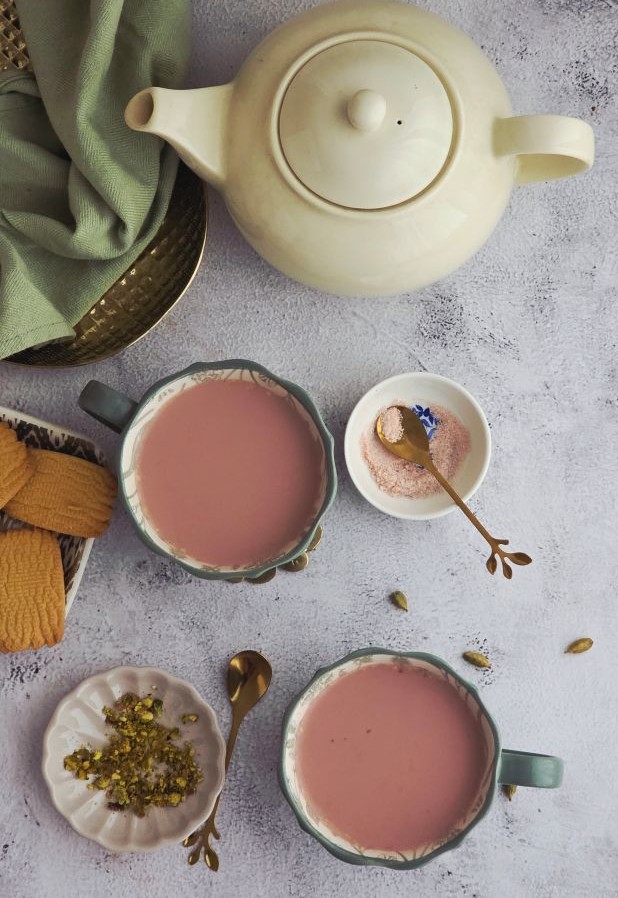
What is Kashmiri Chai?
Kashmiri Chai, also known as Noon Chai or Pink Tea, is a traditional beverage from Kashmir made with green tea leaves, milk, baking soda, and spices like cardamom. The signature pink color comes from a special brewing process where tea is simmered for a long time, aerated, and then mixed with milk.
Traditionally, it has a slightly salty taste (hence the word “Noon,” which means salt), but modern variations often add sugar for a sweeter version.
The tea is usually garnished with crushed pistachios and almonds, making it as beautiful to look at as it is to drink.
Why is Kashmiri Chai Pink?
The beautiful pink color of Kashmiri Chai comes from a chemical reaction that happens when green tea leaves are brewed with a pinch of baking soda. As the tea simmers, it releases chlorophyll and other compounds, and when you whisk and later add cold water, the liquid deepens in color. Finally, when milk is added, the reaction between the tea concentrate and milk creates that signature rosy-pink shade.
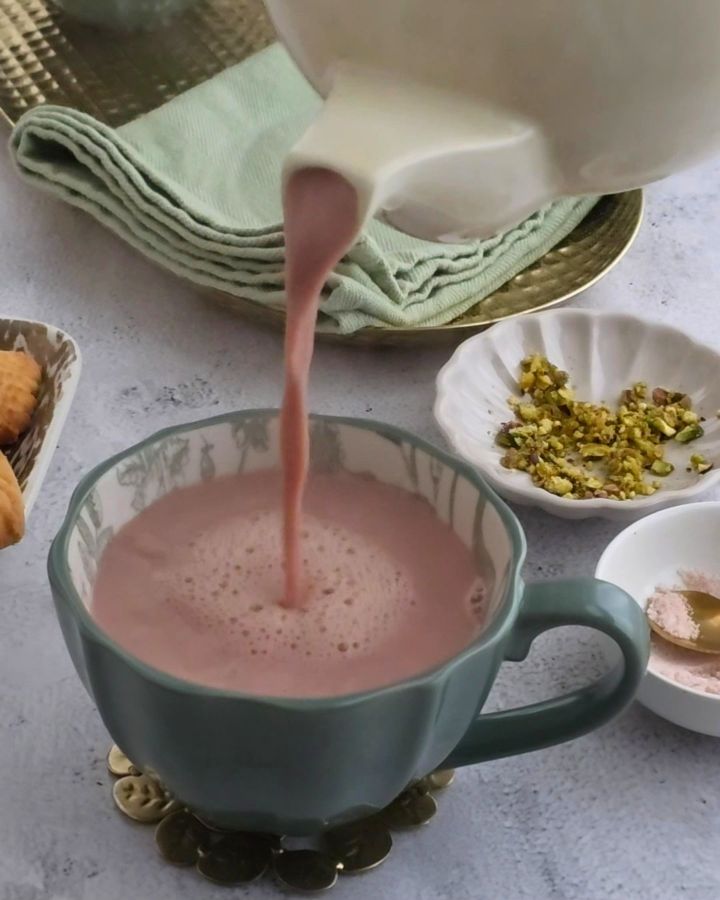
Tea Leaves Used for Kashmiri Chai
The key to making authentic Kashmiri Chai lies in the tea leaves. Traditionally, this tea is brewed with Kashmiri green tea leaves, which are stronger and more robust than regular green tea. These leaves are often tightly rolled and release more tannins, which are essential for creating the chemical reaction that gives Kashmiri Chai its signature pink color.
Some blogs suggest that any green tea can be used, but that’s not entirely true. Lighter varieties like sencha or standard green tea bags won’t produce the same depth of flavor or color — you may end up with a brown or pale brew instead of that beautiful rosy shade.
👉 If you can’t find authentic Kashmiri tea leaves, Chinese green tea (often sold as tightly rolled loose-leaf tea) is the best substitute and is widely available at Asian and Middle Eastern grocery stores.
Popular Brands for Kashmiri Chai Leaves
Here are a few brands you can look for when shopping:
- Shangrila Kashmiri Tea (widely available in Pakistani/Indian stores)
- Tapal Gulbahar Green Tea (commonly used in Pakistan for Kashmiri Chai)
- Ahmad Tea Chinese Green Tea (UK-based brand, reliable substitute)
- Wagh Bakri Green Tea (popular Indian brand, strong flavor)
When buying online or in ethnic grocery stores, look for packaging that mentions Kashmiri Chai, Noon Chai, or Chinese Green Tea to ensure you get the right leaves.
How to Make Kashmiri Chai
The process of making Kashmiri Chai is all about slow brewing and aeration. It begins by boiling green tea leaves with cardamom and sometimes extra aromatics like star anise or a cinnamon stick. The tea is simmered gently until the liquid reduces and becomes concentrated.
At this stage, a small pinch of baking soda is added — this is what triggers the color change. As the tea simmers further, a reddish foam appears on top. To deepen the color, a splash of ice-cold water is poured in, and the tea is aerated by repeatedly scooping and pouring it back into the pot. This step is what helps the tea transform into its signature pink shade.
Once the concentrate is ready, milk is added to balance the flavors and create a creamy texture. Traditionally, a pinch of salt is used, but sugar is often added in modern versions for sweetness. Finally, the tea is strained into cups and garnished with crushed pistachios and almonds, making it as visually stunning as it is delicious.
Can You Make Kashmiri Chai Ahead of Time?
Yes! One of the best things about Kashmiri Chai is that you can prepare the tea concentrate in advance. Once the tea has been brewed and aerated (before adding milk), let it cool completely and store it in an airtight container in the fridge.
The concentrate stays fresh for up to 2 weeks. Whenever you’re ready for a cup, simply reheat a portion of the tea mixture with milk, add sugar or salt to taste, and garnish with nuts. This makes it perfect for busy days, meal prep, or serving a crowd during festive gatherings.
FAQ’s About Kashmiri Chai
1. Why is Kashmiri Chai pink?
The pink color comes from a chemical reaction between the tea leaves, baking soda, and milk. When brewed and aerated properly, the tea develops a reddish base that turns pink once milk is added.
2. Can I make Kashmiri Chai without baking soda?
Baking soda is what triggers the color change, so without it your chai will stay brown. You can still enjoy the flavor, but you won’t get the signature pink shade.
3. What if my Kashmiri Chai doesn’t turn pink?
This usually happens if the tea wasn’t simmered long enough, the leaves weren’t strong enough, or it wasn’t aerated properly. Using Kashmiri or Chinese green tea, simmering patiently, and whisking well are the keys to success.
4. Is Kashmiri Chai salty or sweet?
Traditionally, it’s slightly salty (that’s why it’s also called Noon Chai — “noon” means salt). But many modern recipes add sugar instead, so you can make it either way depending on your preference.
5. Can I use regular green tea bags for Kashmiri Chai?
Regular green tea bags are usually too light and delicate. For authentic results, use Kashmiri tea leaves or Chinese green tea, which are stronger and release the tannins needed for the pink color.
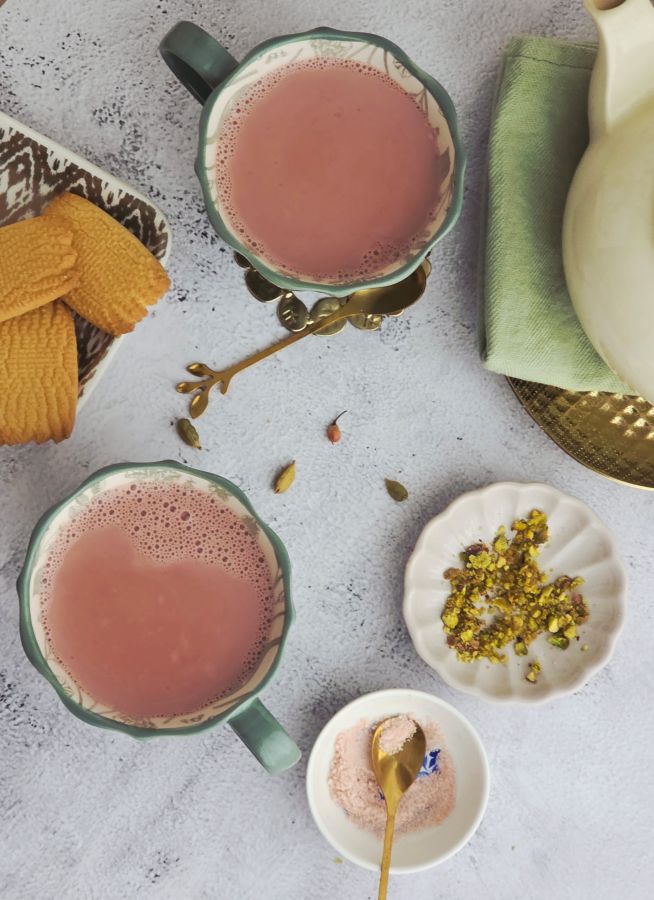
How to Serve Kashmiri Chai
Kashmiri Chai is more than just a warm drink — it’s part of a complete experience. Traditionally, it’s enjoyed during chilly winter evenings, weddings and special occasions. Here are some delicious ways to serve it:
- With Kashmiri breads – like kulcha, sheermal, or bakarkhani.
- With tea-time snacks – biscuits, cake rusk, or savory pakoras pair beautifully with the creamy chai.
- Festive touch – garnish generously with sliced almonds, pistachios, or a sprinkle of saffron for a rich, celebratory presentation.
- Everyday comfort – serve with parathas or simple homemade roti for a cozy breakfast or evening treat.
Whether you keep it traditional or enjoy it with your favorite baked goods, Kashmiri Chai is always comforting and special.
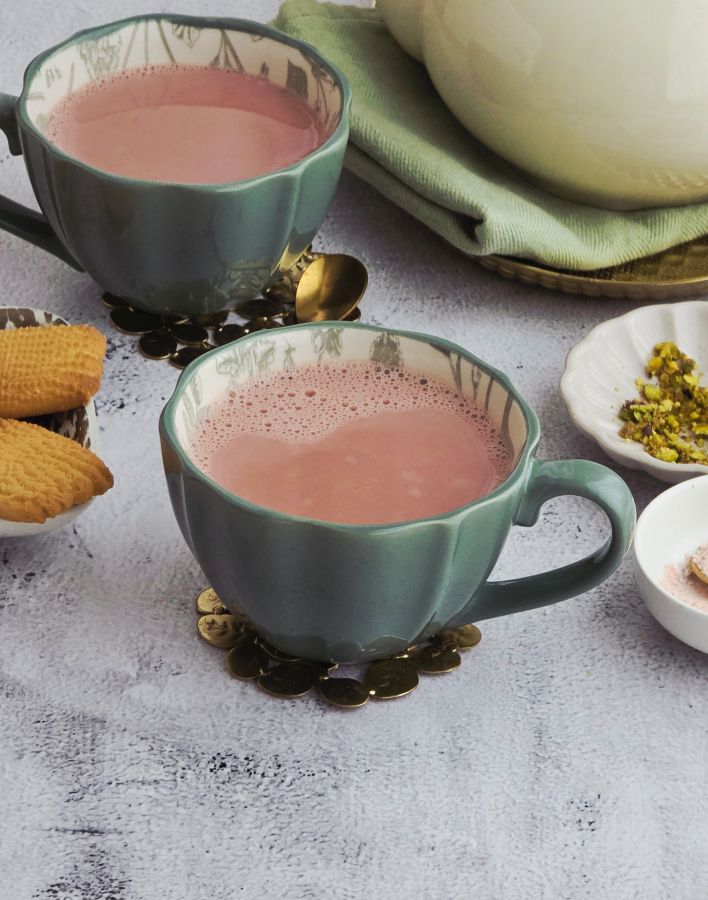
Other Drinks to try:
Let’s chat in the comments! 💛 Tell me how pink your chai turned out and drop any questions. I really appreciate your comments and feedback. To stay connected, follow me on Instagram: @sugarspicenmore.
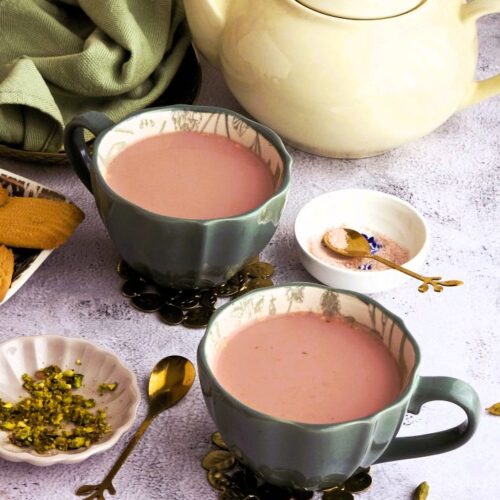
Quick & Easy Kashmiri Chai (Pink Tea)
Ingredients
- 5 tsp Kashmiri Tea (See Notes)
- 4 Cups Water
- 2 Green Cardamoms
- ¼ tsp Bicarb Soda
- 1 cup Ice cold Water
- 3 Cups Milk
- Salt or Sweetener to Taste
- Crushed Almonds and Pistachios (optional)
Instructions
- Bring water to a boil in a heavy saucepan.
- Add Kashmiri green tea leaves and lightly crushed cardamom pods. Optional: add a small cinnamon stick or 1 star anise.
- Reduce heat and simmer until the liquid is about half and deeply aromatic.
- Stir in a pinch of baking soda; continue simmering until you see a reddish/pink foam forming on top, whisking or stirring occasionally.
- Add a glass of ice-cold water, turn the heat to high, and aerate by ladling the tea from a height back into the pot for 1–2 minutes to develop color.
- Test for color by mixing a spoonful of concentrate with a little milk in a cup; if it turns pink, proceed. If not, simmer and aerate a bit longer.
- Add whole milk to the pot, just enough to make the tea dusty pink (the qty of milk needed depends on strength of tea mixture) Bring to a gentle simmer so the flavors marry.
- Strain into cups. Add salt to taste or make it sweet using to sweetner. Add crushed pistachios and almonds
Video
Notes
- Use Kashmiri green tea or Chinese green tea (tightly rolled loose-leaf). Avoid delicate greens (sencha) or tea bags—they won’t color well.
- Reduce the tea by about half before adding baking soda; a strong concentrate is key.
- Baking soda: use just a pinch—too much = soapy/metallic taste and grey color.
- Aeration develops color: after the cold-water shock, ladle from a height or whisk for 1–2 minutes.
- Whole milk gives the creamiest result. Evaporated milk (a splash) = richer; non-dairy milks usually yield less pink. The quantity of milk depends on strength of tea mixture. if stringer you will need more milk to get desired pink colour.
- Seasoning: traditional is a pinch of salt; modern versions add sugar. You can use both (tiny pinch of salt + sugar) to balance.
- Keep spices minimal (cardamom + optional tiny cinnamon/star anise). Over-spicing can mute the tea flavor and affect color.
- If it doesn’t turn pink: simmer longer, make sure leaves are robust, aerate more, then test a spoonful with milk. Add only a tiny extra pinch of baking soda if needed.
- If it turns brown after milk: the concentrate wasn’t ready—keep simmering/aerating before adding milk next time.
- If it tastes bitter/soapy: too much baking soda—add more milk, a little sugar, or dilute with water and simmer briefly.
- Make-ahead: store the tea concentrate (no milk) airtight in the fridge for up to 2 weeks; reheat portions with milk as needed.

